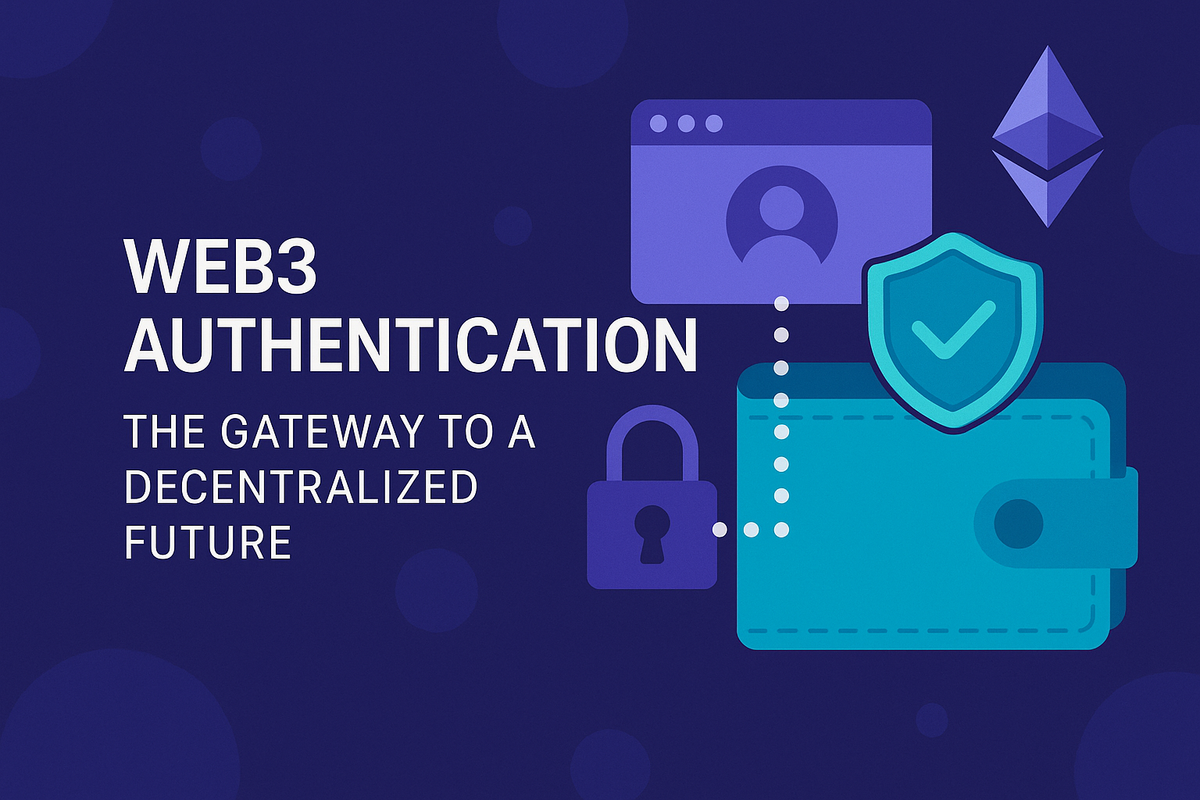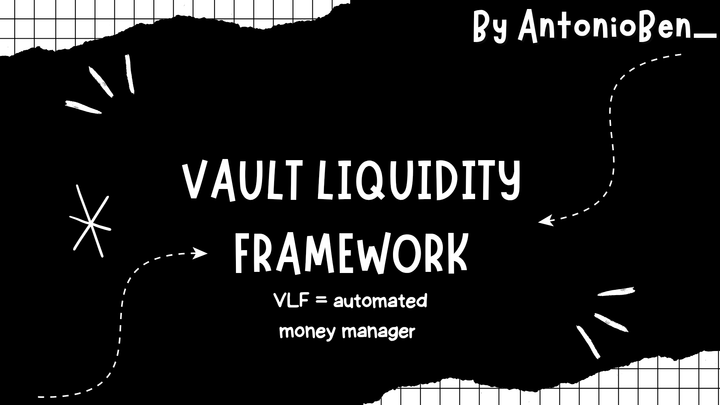Web3 Authentication: The Gateway to a Decentralized Future

As the internet evolves from the centralized control of Web2 to the user-centric, decentralized promise of Web3, authentication systems are undergoing a profound transformation. Unlike traditional logins relying on usernames, passwords, or third-party providers like Google, Web3 authentication leverages cryptographic principles to empower users with control over their digital identities. Anchored by blockchain wallets and emerging decentralized identity (DID) protocols, Web3 authentication is both a cornerstone of the decentralized ecosystem and a battleground for balancing security, usability, and privacy. This article explores the mechanics, challenges, and future of Web3 authentication, shedding light on its pivotal role in shaping the decentralized internet.
Understanding Web3 Authentication
Web3 authentication is the process of verifying a user’s identity to access decentralized applications (dApps), networks, or services within the blockchain ecosystem. At its core, it relies on public-private key cryptography, where users sign transactions or messages with their private key to prove ownership of a blockchain address. The most common entry point is a crypto wallet like MetaMask or WalletConnect, which acts as a digital passport for interacting with dApps such as Uniswap, OpenSea, or decentralized social platforms like Lens Protocol.
Unlike Web2’s centralized authentication where platforms store user credentials and often act as intermediaries, Web3 authentication is inherently user-controlled. When you “connect your wallet” to a dApp, you’re signing a cryptographic message that proves your identity without exposing sensitive data like a private key. This approach aligns with Web3’s ethos of sovereignty, but it introduces unique challenges, from user experience hurdles to security risks.
The Mechanics of Web3 Authentication
The most prevalent method of Web3 authentication involves browser-based or mobile wallets. Here’s how it typically works:
- Wallet Connection: A user connects their wallet (e.g., MetaMask, Trustwallet, Zerion e.t.c) to a dApp via a browser extension or QR code scan (e.g., WalletConnect for mobile).
- Signature Request: The dApp prompts the user to sign a message, which is verified using their public key to confirm ownership of the associated address.
- Access Granted: Once verified, the user gains access to the dApp’s features, such as trading tokens, minting NFTs, or voting in a DAO.
Beyond wallets, emerging solutions are expanding the scope of Web3 authentication:
- Decentralized Identity (DID): Standards like W3C’s DID and Ethereum’s ERC-725/735 enable users to manage verifiable credentials without relying on a single wallet. Projects like uPort and SpruceID allow users to carry portable, self-sovereign identities across platforms.
- Passwordless Authentication: Tools like Magic Link and Web3Auth use email-based or social logins backed by cryptographic keys, abstracting the complexity of private key management.
- Social Recovery Wallets: Wallets like Argent implement multi-party computation (MPC) or social recovery mechanisms, allowing users to recover accounts via trusted contacts instead of seed phrases.
These innovations aim to make Web3 authentication more accessible, but they also highlight the trade-offs between decentralization and convenience.
Challenges in Web3 Authentication
While Web3 authentication promises greater user control, it faces significant hurdles that must be addressed for mainstream adoption.
1. User Experience (UX) Friction
For non-technical users, managing private keys or seed phrases is daunting. A single mistake losing a seed phrase or clicking a malicious link can lead to total loss of funds or access. Even seasoned users find wallet interactions clunky, with frequent signature prompts disrupting the flow of dApp usage. For example, swapping tokens on Uniswap may require multiple confirmations, which can feel cumbersome compared to Web2’s seamless logins.
Solutions like Web3Auth and Magic Link aim to bridge this gap by offering familiar login methods (e.g., email or Google) while generating cryptographic keys in the background. However, these approaches often rely on semi-centralized infrastructure, raising questions about their alignment with Web3’s decentralized ethos.
2. Security Vulnerabilities
Web3 authentication’s reliance on private keys makes it a prime target for attackers. Phishing scams, where users are tricked into signing malicious transactions, are rampant. In 2022, over $3.7 billion was lost to Web3-related hacks, many tied to compromised wallets or social engineering.
Hardware wallets (e.g., Ledger, Trezor) offer robust security but require additional cost and technical know-how. Meanwhile, software wallets like MetaMask are vulnerable to browser-based attacks if not properly secured. Social recovery wallets and MPC-based solutions are promising, but their adoption remains limited.
3. Regulatory Tensions
Web3’s pseudonymous nature clashes with growing regulatory demands for Know Your Customer (KYC) and Anti-Money Laundering (AML) compliance. Regulators in regions like the EU (via MiCA) and the US (SEC guidelines) are scrutinizing blockchain transactions, pressuring dApps to integrate identity verification. This creates a paradox: how can Web3 maintain user privacy while complying with laws? Projects like Civic are exploring KYC-compliant DIDs, but widespread adoption is still nascent.
4. Interoperability and Fragmentation
The Web3 ecosystem is fragmented across blockchains (Ethereum, Solana, Polkadot, etc.), each with its own wallet standards and authentication protocols. This lack of interoperability complicates user experience, as a wallet compatible with Ethereum may not work seamlessly on Solana-based dApps. Efforts like the WalletConnect protocol aim to standardize cross-chain authentication, but challenges persist.
The Future of Web3 Authentication
Despite these challenges, Web3 authentication is evolving rapidly, driven by innovation and community demand. Here are key trends shaping its future:
- Decentralized Identity (DID) Adoption: DIDs promise a universal, user-controlled identity layer. By storing credentials on blockchains or decentralized storage (e.g., IPFS), users can authenticate across dApps without repetitive wallet connections. Projects like SpruceID and the W3C DID standard are gaining traction, with potential applications in DAOs, DeFi, and even real-world credentials like passports.
- Improved UX with Abstraction: Solutions like account abstraction (Ethereum’s ERC-4337) allow wallets to function more like smart contracts, enabling features like gasless transactions, batch approvals, or social recovery. This could make Web3 authentication as intuitive as Web2 logins.
- AI and Biometric Integration: AI-driven authentication, combined with biometrics, could enhance security and usability. For instance, zero-knowledge proofs (ZKPs) could verify a user’s identity (e.g., via facial recognition) without exposing sensitive data, aligning with Web3’s privacy focus.
- Cross-Chain Standardization: Protocols like WalletConnect and Chainlink’s CCIP are working toward seamless cross-chain authentication, reducing fragmentation and enabling a unified Web3 experience.
- Regulatory-Friendly Solutions: Hybrid models that integrate KYC/AML compliance without sacrificing user control are emerging. For example, Civic’s decentralized KYC allows users to share verified credentials selectively, balancing privacy and compliance.
Why Web3 Authentication Matters
Web3 authentication is more than a technical mechanism, it’s the gateway to a decentralized internet where users, not corporations, control their digital lives. By replacing centralized gatekeepers with cryptographic proofs, Web3 authentication empowers individuals to own their data, interact pseudonymously, and participate in trustless systems. However, its success hinges on solving UX, security, and regulatory challenges.
For developers, researchers, and enthusiasts, the evolution of Web3 authentication offers fertile ground for innovation. Whether it’s building intuitive wallets, securing cross-chain interactions, or advocating for privacy-preserving policies, the stakes are high.
Conclusion
Web3 authentication is at a crossroads. It holds the promise of a user-centric internet but faces hurdles in usability, security, and regulation. By leveraging innovations like DIDs, account abstraction, and cross-chain protocols, the Web3 community can create authentication systems that are secure, seamless, and scalable. As the ecosystem matures, Web3 authentication could redefine how we interact online, making trust and ownership the default rather than the exception. For now, the challenge is clear: make Web3 authentication so intuitive that even your grandma can connect her wallet and so secure that no hacker can touch it.



Comments ()